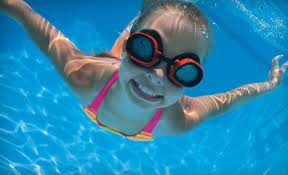
Preparing Your Swimmer And Keeping Them Safe
by Marshall Love
Parents can help their children to love the water before lessons even start. Take these tips to heart:
-Are you a good swimmer? If you aren’t or if you have any fear of the water, make a commitment to take lessons ASAP. Kids keenly sense their guardians’ trepidations and will internalize them. You can do more for their swimming by bolstering your own confidence than you may have ever imagined! Not to mention that you will be their first line of defense against drowning. Can you swim well enough to save them if they fall off a pier or out of a boat? If you haven’t yet learned to swim well, it’s time to get going! Do it for them and for you.
-When giving them a bath, make a point to get water in their ears and on their face. Try filling the bath to only 3-6 inches depth and encourage them to lie on their stomachs to try blowing bubbles. Bubble blowing seems like an elementary skill to most parents, one that should be mastered quickly and left behind on the route to swimming mastery—yet the skill of air exchange is hugely important and is rarely mastered quickly by young students. They can never blow too many bubbles. When they are getting good, have them do it with their faces in (and even with goggles on). Also try having them lie on their backs and “listen to the fish” under the water. The new sound of water in the ear canal is a stumbling block for many young swimming students. You can help them get a big heard start.
-Try the above skills in a pool with a ledge or on the steps. This will get your swimmer used to pool environments and to have them used to having the water line near their face, which can be great for their upcoming or ongoing lessons!
-Have your standing-age kids take a shower with you. The water sheeting over their faces is something many parents never think to introduce their children to. This experience can help a child leapfrog their water readiness! Think about it: when they get to the stage where they are ready to learn to breathe on their own (some kids make it this far by 2.5 years), they will need to take a quick breath while the water is sheeting over their face. They may be cautious at first. Keep trying and be all smiles and positive encouragement.
–Many parents ask me about floaties and swimming aids for non-swimmers. While arm floaties do slip off and can be a danger, there are some with better security that can be fun for more advanced non-swimmers. Also, there are dozens of flotational body suits. Look for ones with the appropriate weight floatation for your swimmer. Of course, too little flotation is a bad idea, but too much can be even worse as it can topple your child face-first onto the surface! Of course, watch your child (in the water with them) every second.
-Lastly, when supervising your swimmers, remember that drownings are almost always SILENT. Swimmers slip under without a sound and can die or be brain damaged in very short order. There is very little audible struggle.
When you are with friends supervising the kids or a swim party, seriously consider hiring a lifeguard or paying an older sibling/family friend to watch the pool with both eyes. Surprisingly, the more adults watching the pool, THE WORSE. When multiple adults are casually watching the pool, there’s a “dispersion of responsibility” that can be extremely dangerous for their young charges.
When considering a swimming school or backyard swimming teacher, parents should insist on reviewing the credentials and peer reviews of the operation.
-What do other parents say about their experience with the school/ teacher?
-Are the teachers trained in CPR/first aid/water safety?
-Is the facility clean and orderly?
-What is the temperature of the water? (Students under 80 pounds do best when water is above 85 degrees. Babies do better when water is 88-92 degrees)
-The outward appearance of the venue probably reveals something about the overall preparation of the teachers and classes.

